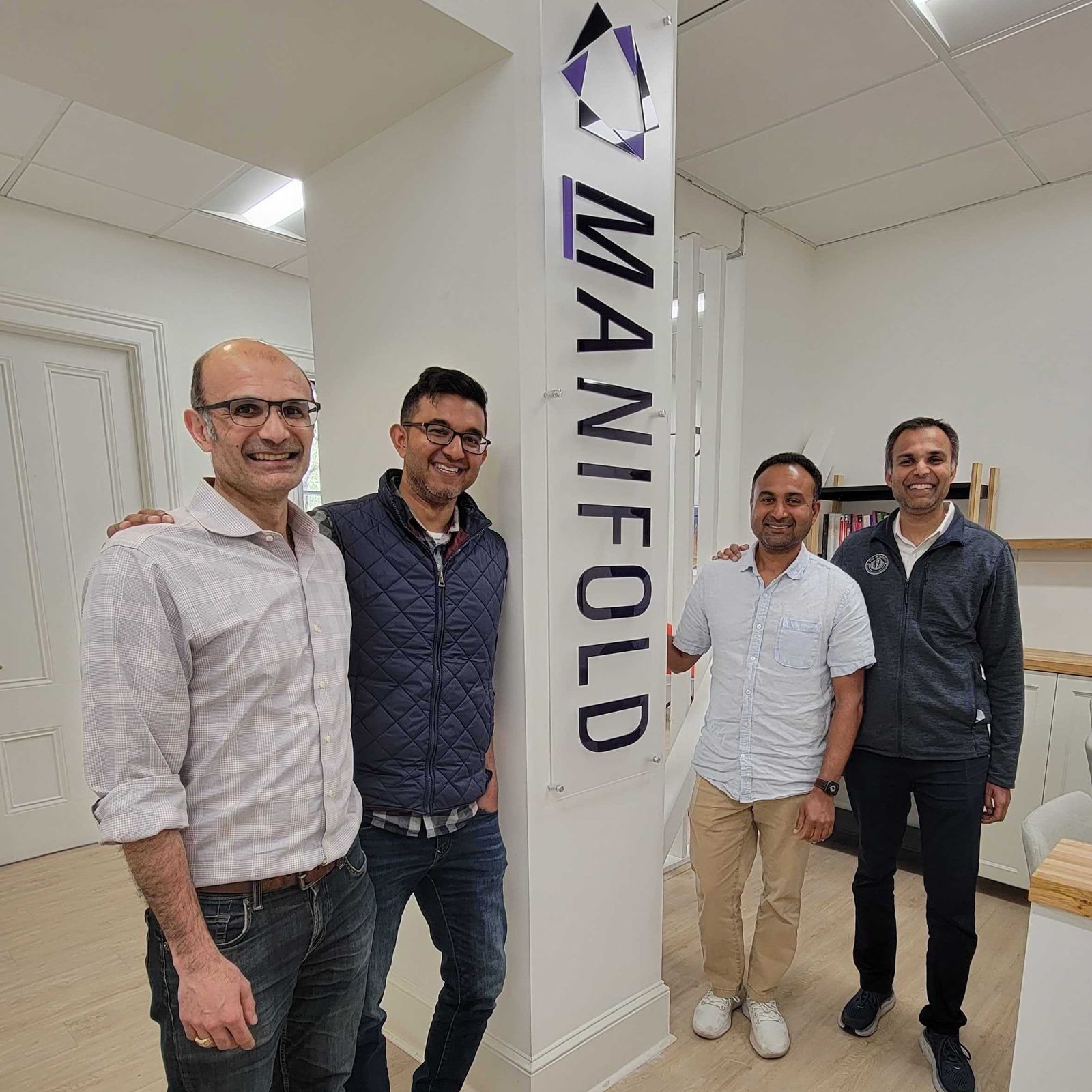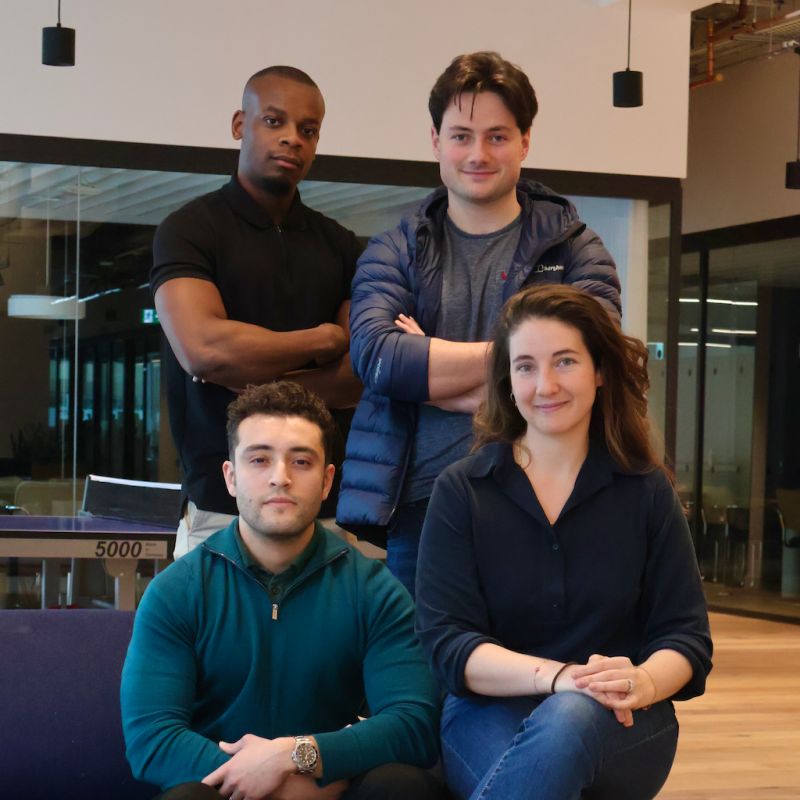The Importance of Middle Skills Pathways in the Aftermath of COVID-19
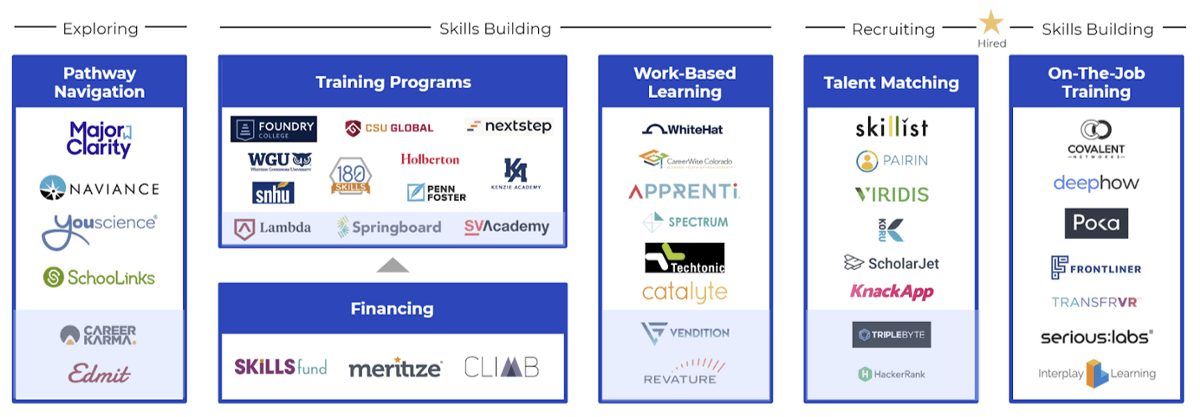
by Taylor Stockton, Reach Fellow and Shauntel Garvey
Reach’s interest in the middle skills sector initially emerged from our broader focus on career pathways. But as we now grapple with the disproportionate impact of the COVID crisis on frontline workers, questions around accessible pathways to middle skills jobs (those that require more education than a high school diploma, but less than a four year bachelor’s degree) have been given new meaning and importance.
Over the course of only two months, over 35 million Americans filed new claims for unemployment, and tens of millions more saw lost hours or income. As we cautiously look towards re-opening the economy, we know that a third of Americans who lost their jobs feel they need more education to re-enter the workforce, 59% of whom would prefer non-degree programs such as occupational licenses or industry credentials.
We believe middle skills pathways are an important area to dig into further to support individuals in returning to the workforce and to address talent shortages that existed even before the pandemic and are expected to continue to grow (e.g., nursing, cybersecurity, advanced manufacturing). Our hope is that by sharing our research in this area, we can spark dialogue on the critical education and workforce questions that need to be addressed in the wake of COVID-19. We are eager to hear from entrepreneurs, investors, practitioners and others who care deeply about this space, as we work together to create new models for economic mobility.
Understanding the Middle Skills Landscape
Middle Skills Company Segmentation
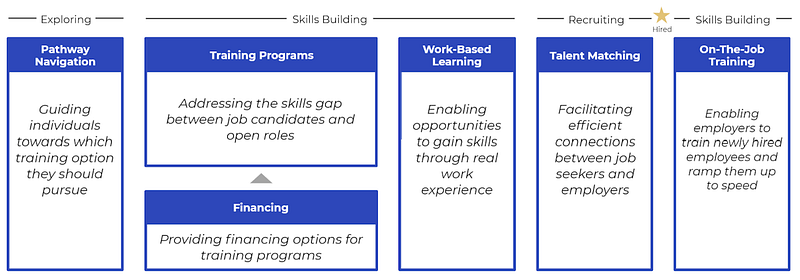
Our research suggests that there are a number of important segments of companies that make up the landscape of middle skills pathways, some of which we dive into in more depth below. In creating our market map, our intent was not to be completely exhaustive, but to highlight representative examples of each segment, which include a handful of non-profits (e.g., CareerWise Colorado) as well.
One challenge in market mapping this space is the ambiguity of what qualifies as a company supporting “middle skills” pathways. Our framework focuses on the career development process, as opposed to the type of job it results in. We chose to include a handful of companies (shaded in blue) in our market maps that may not be middle skills pathways right now, but we felt were relevant to the ecosystem because their models (or similar) could be expanded to prepare learners for middle skills jobs in the future.
Middle Skills Market Map
Opportunity Areas
Though our team believes there is tremendous opportunity for companies to support middle skills pathways across all segments, we will go deeper into three we found particularly notable:
Pathway Navigation Landscape
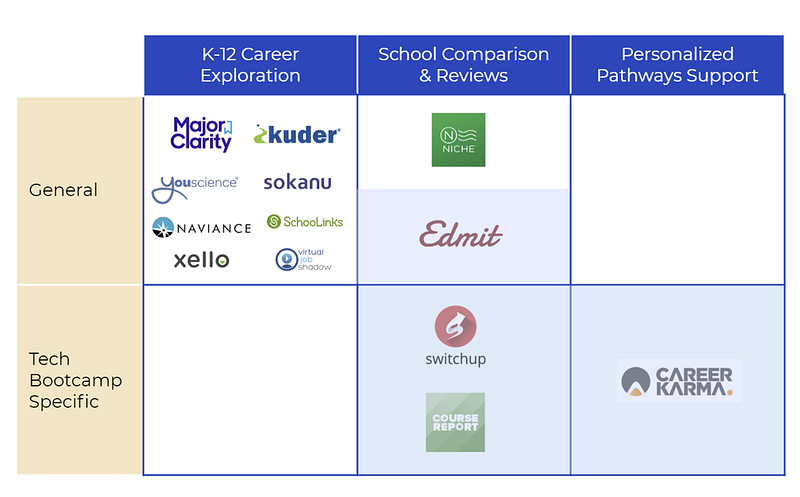
With over 730,000 education credentials in the US and limited transparency on outcomes, it can be difficult for individuals to navigate and evaluate the vast array of education options available. We believe there is a significant opportunity for companies to create awareness for middle skills jobs, while supporting individuals in evaluating and identifying the best education pathway to prepare for them.
Takeaways:
- Increase Exposure in K-12 — there is an opportunity for platforms that work directly with K-12 schools to increase exposure to careers that are accessible through education pathways other than four-year college degrees
- Provide Personalized Navigation Support — Career Karma has a unique model in providing personalized recommendations and coaching as individuals navigate which tech bootcamps to pursue, but there is white space in the market for companies to provide similar support for individuals interested in middle skills pathways
- Shift the Narrative — given historically there has been a lack of awareness and sometimes negative perception of middle skills pathways, companies that are successful in this segment will be those that generate new pockets of awareness and change perceptions around jobs accessible through these pathways
Training Programs Landscape

Historically, there have been a lack of middle skills training programs that are affordable, flexible, and generate consistently strong student outcomes. Though new models are beginning to emerge, there is still tremendous opportunity in the market to launch high-quality middle skills training programs, particularly when separating programs by industry focus.
Takeaways:
- Shift Financial Risk Off Students — training programs that are most successful will be those that shift the financial risk of education off of students, whether through income-share agreements, deferred tuition job guarantees, or employer paid models
- Design for Career Placement — shifting risk off students implies job placement outcomes must be strong and new best practices are emerging around designing programs with employer-driven curriculum, highly flexible formats to fit into adult learners’ busy lives, and strong levels of individual coaching to support student success
- Identify Appropriate Credential — the ideal program credential (e.g., Associate Degree vs. industry credential) will vary based on the industry and occupation, but programs should understand the value that stackability and portability can bring to enable continued upskilling
Work-Based Learning Landscape
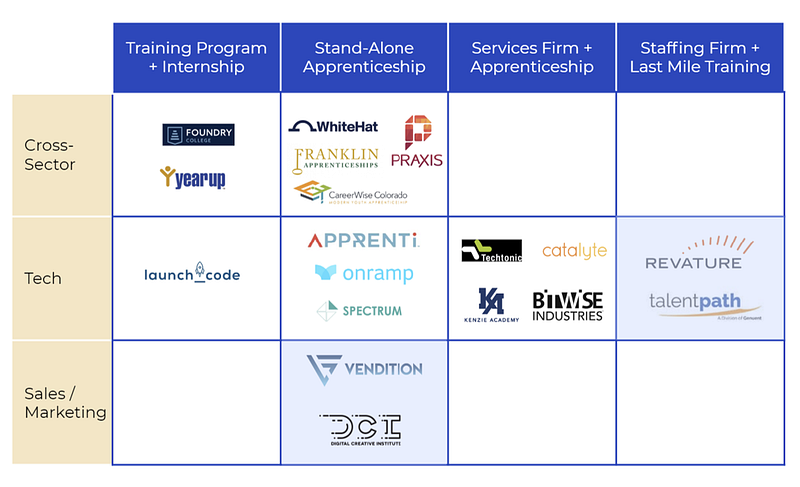
Work-based learning is a proven model to reduce friction in the labor market, but penetration in the US market remains low (70% of students in Switzerland go through an apprenticeship program, compared to only 5% in the US), largely driven by lack of government policy support. US apprenticeships that do exist are concentrated in construction and military roles, pointing to a large opportunity to expand apprenticeships and other work-based learning models.
Takeaways:
- Hire the Learner — friction is reduced even further by employing the individual as they progress through the work-based learning, demonstrated by staffing firms like Revature, as well as apprenticeship providers like Spectrum, both of which employ individuals as they are learning before deploying them to clients
- Create Learning While Earning Models — software development firms like Techtonic and Catalyte have shown the value of incorporating apprenticeships into their model, and now upskilling providers Kenzie Academy and Bitwise Industries have shown that launching their own software development firms can create work-based learning opportunities for the individuals being upskilled
- Leverage Public Support — given the success of European work-based learning models that have been accelerated through public policy such as the UK apprenticeship levy, US players should take advantage of bipartisan support for expanding work-based learning (the last two administrations increased federal funding) to create sustainable and scalable models
Finding Sustainable Models to Support Middle Skills
Reach believes there are numerous opportunities to better support middle skills pathways across all segments of the landscape. That said, an important question that arose when exploring this space was in what situations a venture-backed startup could sustainably support these pathways at scale, and in what situations a public or nonprofit entity would be in a better position to support individuals.
Our belief is that successful venture-backed startups serving middle skills pathways will spend time understanding the right combination of job pathways and people to serve.
Sustainable Models: A Combination of People and Pathways
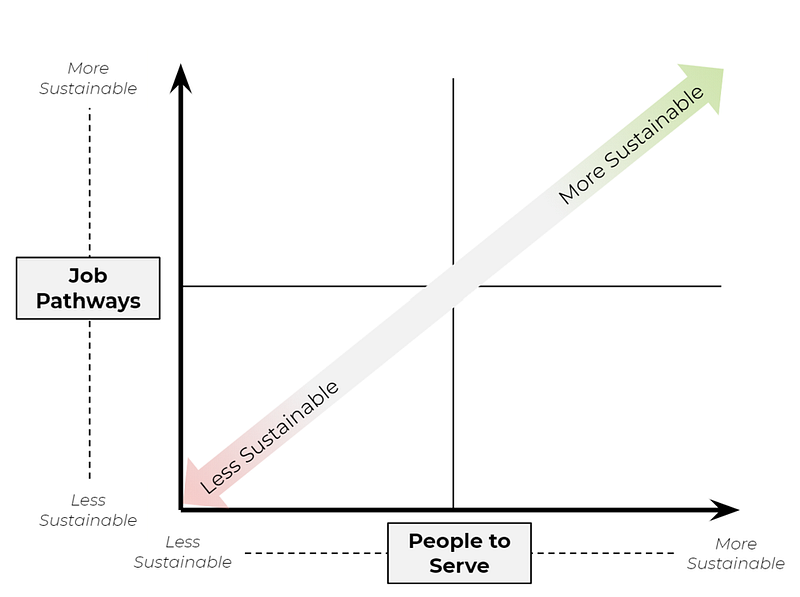
Takeaways:
- Identify Best Job Pathways — companies should identify which job pathways are the most sustainable to support people on by evaluating criteria such as the size of the talent shortage, income level, duration of training, percentage of training that can be completed online, and employer density in a given area
- Manage Student Intake Effectively — as programs shift financial risk off of students, it is critical to ensure the programs are confident that they can deliver strong outcomes for the students they are serving, by considering strategies such as creating steps in the application process to validate student interest/fit or increasing selectivity to ensure student support needs align with a sustainable program model
The Reach team feels strongly about the importance of middle skills pathways and the need for innovation at all stages of this ecosystem, particularly in the wake of COVID-19. We look forward to continuing the conversation on these important questions and helping drive progress to ensure that all Americans have access to high-quality pathways to upward mobility.
You can view our full Middle Skills Pathways report here.
Thank you to Jennifer Wu for reviewing this post and providing feedback.

